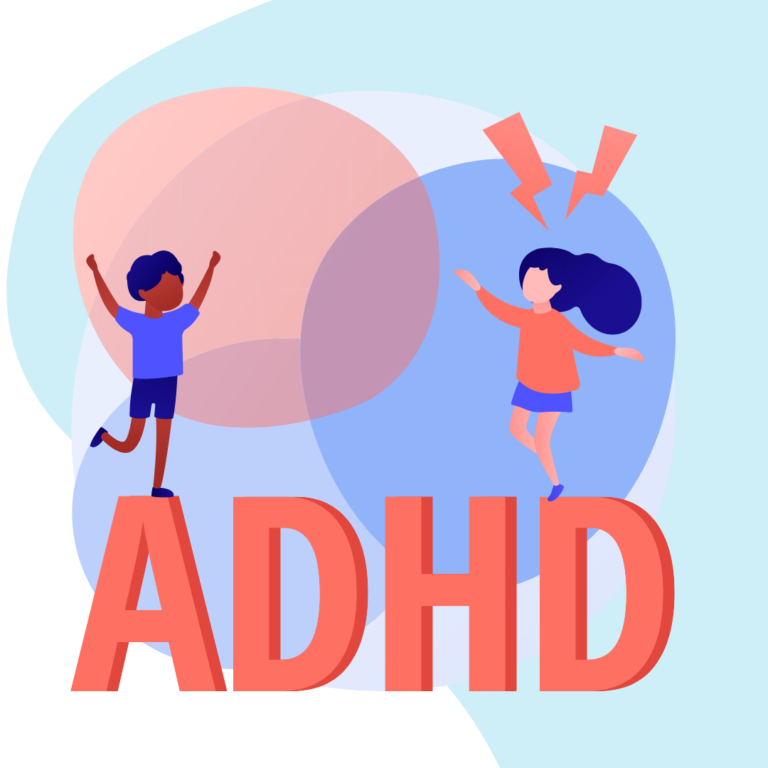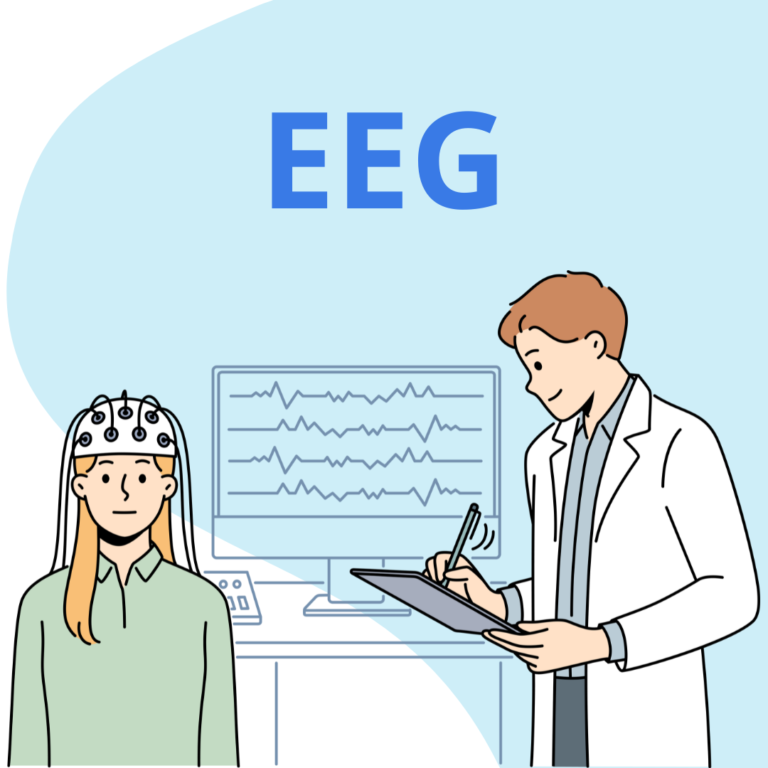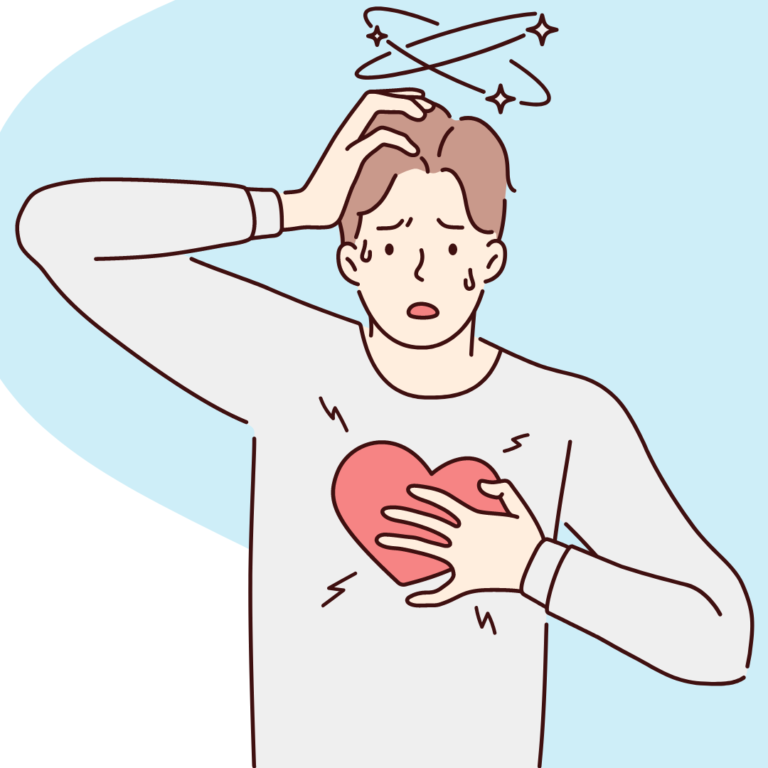Epilepsy is a disease that we know better and better. We know more and more about its aetiology, diagnostics, treatment and living with it. It is, therefore, not surprising that the very definition of epilepsy is also changing over time. What is epilepsy, how is it currently defined and what significance does this have for the medical community and, above all, for patients? In this article, we will put the latest knowledge in order, and at the same time, we will touch upon the treatment of epilepsy which we will certainly develop in future publications.
Table of contents
What is epilepsy?
There is a constant electrical activity in our brain, triggered by complex chemical transformations taking place in nerve cells. This is a natural process that allows the brain and the whole body to function properly. In a healthy person, there is a balance between the cells that excite and those that can stop the impulse.
An epileptic seizure occurs as a result of an imbalance in this process when cell activity is too high or too low. Chemical changes can lead to spikes in electrical activity, which in turn cause seizures. Seizures themselves are not a disease. They are a symptom of many different disorders affecting the brain. Some seizures are barely noticeable, while others can even cause disability.
Epilepsy is a chronic neurological disease characterised by recurrent, unprovoked seizures. It is diagnosed if a patient has had two unprovoked seizures (or one unprovoked seizure with a high likelihood of recurrence) that were not caused by some known and reversible medical condition, such as alcohol withdrawal or very low blood sugar, for example.
Seizures in epilepsy can have a variety of causes, such as being related to a brain injury or a family tendency. However, the cause is often completely unknown. The word “epilepsy” alone does not explain the cause of seizures or their course. Many people living with epilepsy have more than one type of seizure and at the same time they may be a symptom of other neurological problems. Sometimes the EEG (electroencephalogram), clinical history, family history and prognosis are similar in a group of people with epilepsy. In such situations, their condition can be described as a specific epilepsy syndrome.
An epileptic seizure results from a disturbance in the bioelectrical activity of the brain, which can be compared to a short circuit. The rapid discharge causes the current to pass through all the neurons at once, reaching all the muscles at once, which contract violently. This is how an epileptic seizure begins. Factors such as the location of these discharges, the way in which they spread, the size of the area of the brain that is affected, and the duration, determine the nature of the seizure and its effect on the individual.
Seizures v. epilepsy
A seizure and epilepsy are not the same thing. A seizure can be triggered in anyone, including healthy people, as it is a physiological reaction of the brain subjected to too much pressure. About 5% of people worldwide experience an electrical storm in the brain at least once in their lifetime. This is called a lowered seizure threshold. However, an epileptic seizure is a transient occurrence of signs or symptoms of abnormal, excessive or synchronous neuronal activity in the brain. Epilepsy is a disease characterised by a persistent predisposition to epileptic seizures and the neurobiological, cognitive, psychological and social consequences of this condition. The difference can be explained as follows: a seizure is an event and epilepsy is a disease involving recurrent unprovoked seizures.
- Facts about epilepsy and seizures
- 65 million people worldwide suffer from epilepsy.
- Between 4 and 10 people in 1000 experience active epileptic seizures at any time.
- As many as one third of people with epilepsy live with uncontrolled seizures because existing medication does not work for them.
- 6 out of 10 people suffer from epilepsy, the cause of which is unknown.
- If you have had two seizures, there is about an 80% chance that you will have more of them.
About half of people who have had one seizure for no apparent reason, will have another, usually within 6 months. If there is a known cause for the seizure (for example, brain injury or another type of a known brain disease), you are twice as likely to have another seizure.
If the first seizure occurred during a brain injury or infection, such a patient is more likely to develop epilepsy. Frequently, more seizures occur only after several weeks or months after the initial injury or infection.
Having more seizures is also likely if there are any abnormalities found in the neurological examination. An EEG (electroencephalogram) examination allows us to look at the electrical activity of the brain and can help predict whether more seizures will occur. Certain patterns in the EEG are typical of epilepsy. If the patients’ brain waves show these types of patterns, they are about twice as likely to have epilepsy.
The old and the new defintion of epilepsy
Not so long ago, the commonly used definition of epilepsy mentioned two unprovoked seizures more than 24 hours apart. This definition has many advantages, but also several limitations. Firstly, it does not allow for the possibility of the epilepsy getting more advanced.
The inclusion of the word “provoked” seems to suggest that patients have photosensitive seizures – induced by flashing lights or patterns. It is open to debate whether a seizure provoked – e.g. by a specific light stimulus, sleep deprivation or excessive emotion – is an epileptic seizure or just a convulsive seizure not falling within the definition of epilepsy. No definition has resolved this unequivocally.
Some people have only had one unprovoked seizure, but because they have other risk factors, they are very likely to have another. Many doctors diagnose epilepsy in such cases after the first seizure.
Finally, some patients may have what is called an epilepsy syndrome and these people should meet the definition of epilepsy even after one seizure. The new definition of epilepsy addresses each of these points.
According to the new definition, a person is considered to have epilepsy if she/he experiences any of the following conditions:
- At least two unprovoked (or reflex) seizures that occurred more than 24 hours apart.
- One unprovoked (or reflex) seizure and probability of subsequent seizures similar to the overall risk of recurrence (at least 60%) after two unprovoked seizures, which will occur in the next 10 years.
- Diagnosis of epilepsy syndrome:
Point 1 of the revised definition is the same as in the old definition of epilepsy. Point 2, on the other hand, allows the condition to be considered epilepsy already after one seizure if there is a high risk of a second seizure. If the risk is not precisely established, the old definition will be applied, that is waiting for a second seizure before diagnosing epilepsy. Point 3 refers to epileptic syndromes such as benign epilepsy with centrotemporal spikes, previously known as benign rolandic epilepsy, which usually presents by the age of 16 and always before the age of 21. If the patient has not experienced a seizure for at least 10 years and for the last 5 years has not taken any anti-epileptic drugs, then the epilepsy can also be considered cured. However, this does not guarantee that there will be ne recurrence of epilepsy, but it does mean that the chances of this happening are inconsiderable.
In such circumstances, a patient is entitled to believe that he or she is free of epilepsy. This is a major potential benefit of the new definition.
What has changed as a consequence of the new definition?
Although the change in the definition of epilepsy has caused some controversy, it is likely that its consequences in the real world will be quite inconsiderable. Some people will be able to say that their epilepsy has subsided. Others may encounter problems and feel stigma when they learn that in some circumstances they can be diagnosed with epilepsy after one seizure rather than two. The definition may stimulate research ofthe likelihood of having another seizure after the first one in different clinical circumstances. Governments and regulatory agencies, epilepsy therapeutic test providers, insurance companies and other third party payers may need to adjust some of their definitions. One reason why the changes will be minor is that many practicing physicians already consider people with one seizure and a high risk of another, to have epilepsy. The process of changing definitions simply formalises this way of thinking.
A disease, not a disorder
By definition, epilepsy is now referred to as a disease rather than a disorder. This was the decision of the executive committees of the ILAE (International League Against Epilepsy) and the International Bureau for Epilepsy. Epilepsy is a heterogeneous disease, just like cancer or heart disease, which are unquestionably called diseases. Paradoxically, the word “disease” is better associated with the public, and better conveys the burden of epilepsy on the patient. Since seizures and epilepsy can affect safety, relationships, work, driving and many other spheres of life, public perception and treatment of people with epilepsy are often bigger problems than the seizures themselves.
Making a diagnosis of epilepsy is not the same as deciding on treatment. Some seizures are minor, and in some cases the decision is not to give medication to avoid the side effects of its use. Treatment decisions are made on an individual basis, in consultation between the person with epilepsy and the doctor. It is also possible that the information from the patient is incomplete, for example a possible seizure may not have been observed. In such circumstances it may not be possible to confidently diagnose epilepsy on the basis of any definition. Doctors will use their best judgement when faced with such incomplete information and will often wait for future developments.
The good news is that there are many types of epilepsy therapy available, and each is individually tailored to the specific patient and their case. It may be one of the dozens of drugs currently registered in Poland, a surgical operation or finally a change in diet or the introduction of a specific lifestyle hygiene.
The goal of epilepsy treatment is to live a life without seizures and without side effects
If you suspect that you or any of your relatives is having seizures, your first step should be to see a doctor to determine if the symptoms you describe are epileptic seizures. The terms “epilepsy” and “epileptic seizures” generally mean the same thing. Before a specialist can diagnose epilepsy, however, he or she must take a thorough history – asking a series of questions about your symptoms, their course and characteristics, and then ordering the necessary tests.
The next step is to decide how to treat your seizures. Your doctor will first want to talk to you about taking anti-epileptic drugs. There are many different medications that are used daily to control seizures. Some will work for very specific types of seizures, and others may be effective for many different types of seizures.
Now, there are therapies that are available to stop or control seizures in most people with seizures and epilepsy. The first step is to choose the right medication. While most people already respond well to the first or second drug tried, for others none of the drugs used work or anti-epileptic drugs may cause bothersome side effects.
Choosing the right medicine depends on many factors, such as:
- the type of seizure,
- a patient’s age and sex,
- other health problems that the patient has,
- for women: whether the patient is planning to get pregnant,
- the possible side effects of the medicine.
When you and your doctor decide which antiepileptic drug to try first, you need to make sure you have clear instructions on how to take it. Taking antiepileptic drugs means that you have to create new habits, changing your rhythm of life. Medicines used to treat epilepsy are taken daily and usually for a long time (months, years).
Some things you need to know when starting to take the medicine:
- what dose or how many tablets you need to take,
- at what time,
- whether to take them before or after eating,
- what side effects they may cause,
- if and when blood tests are needed while you are taking your medicine,
- when to have a follow-up appointment again,
- any other special instructions you have received from your doctor.
Treating, or more so managing epilepsy requires a team approach. You and your family or your loved ones are the main players in your team. As you take the first steps on your treatment path, the understanding and support of those around you, doctors and nurses, will be very valuable to you. It is also crucial to keep learning about epilepsy and how to treat it. This will really help you to control your seizures. The treatment will not work by itself. It is you as the patient and your team who will need to work together to reach the goal.
Epilepsy – what to start with?
- Before going to the doctor, make a list of your concerns and questions. Use a notebook, a piece of paper, a smartphone, a seizure diary… Whatever works for you. Remember, this is your epilepsy, so when you have concerns, write them down. Your doctor will know as much as you tell them!
- Take notes during each visit, make a list of questions and concerns. Discuss them with the doctor. If he/she cannot answer your questions at the moment, try to make another appointment. When it comes to your epilepsy, there are no stupid questions; uncertainty easily turns into tension and stress, which adversely affect the course of the illness.
- Don’t be afraid to tell your doctor and your family when certain facts about epilepsy are not clear to you and you need help. Epilepsy can be complicated, especially when you have been recently diagnosed and the whole situation is new to you.
- If you do not understand the information given, be sure to let us know. You will not benefit from it if it is not explained in a way you can understand it. Ask what the medical terms mean, don’t guess. It is important that you and your doctor and family speak the same language.
- Once you have seen the doctor, it will be important not only to know what you have talked about, but also what you are going to do next. If a change in treatment is being made, make sure you know what to do and write it all down. If you don’t get answers to some questions, write them down again for next time.
- If your doctor prescribes you an anti-epileptic drug, find out as much as you can about it. When and how to take it is the key information you need to get, and stick to it scrupulously. Antiepileptic drugs should be taken daily as prescribed. If the right amount is not taken at the right time, the medication may not be able to prevent seizures. It may happen that despite being diagnosed with epilepsy, there is no need for medication. This is normal, your doctor will explain why this is the case.
- Do not be influenced by opinions on social media forums. It is up to your doctor to individually assess the advantages and disadvantages of taking a given medicine. The unverifiable experiences of others should not replace a consultation with your doctor. However, if you have any doubts, consult your doctor.
- After your appointment, talk to your family, relatives or someone who is accompanying you in your epilepsy treatment. Check what they learned during the visit. Write down what they learned or what questions they have.Of course, the individual steps can (and often must) be different, depending on the disease situation. If you have decided to receive treatment at the Neurosphera Epilepsy Therapy Centre, some of these steps will certainly look different. They will also be easier to follow. When you register in NeuroTerminal, you do not have to keep a standard epileptic seizure diary – you will keep a digital diary of events. You also don’t have to worry about your doctor not having access to up-to-date information or medical records. From now on, you are connected through one integrated system. And if you have any additional questions, doubts that could not be addressed during the appointment- you will be able to conveniently send a message directly to your attending physician, without making an appointment and without leaving your home.




